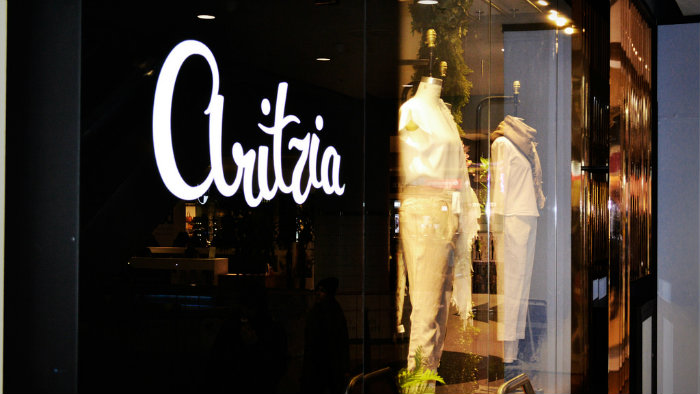Aritzia Inc. (TSX:ATZ) released its first-quarter results July 12. It hit the retail trifecta; revenues were up 14.7%, same-store sales grew 9.3%, and adjusted net income increased by 29.8%.
Not only did Aritzia perform on the top and bottom line, but it also managed to keep opening stores with an Aritzia opening in Los Angeles, a Wilfred in Toronto, and remodeled Aritzia in Vancouver. While stores are closing all over North America, Aritzia continues to grow.
So, why, if things are so good, is its share price falling like a stone?
Fool.ca’s Joey Frenette believes it’s a case of wrong industry, wrong time. Retail sucks, and unless you’ve got a tried-and-true business model like Dollarama Inc., the trend is not your friend.
“The management team at Aritzia is quite creative and has done a terrific job of expanding cautiously in a harsh environment where many fashion retailers are going belly up…” Frenette wrote July 19. “Although ridiculously cheap with a 10 price-to-earnings multiple, the company is dangerously cyclical and could be in big trouble once the next recession arrives.”
There’s more to its falling share price
Ever since Aritzia went public last September, I’ve been very skeptical about owning its stock. Whether it be gross margins that aren’t nearly high enough for a specialty retailer or terrible customer service, the headwinds retail currently face are only a part of the problem.
As I see it, Aritzia, despite going slow on expansion, is spreading itself too thin. In December, it launched its first Babaton retail store in Toronto, bringing four the total number of brands with brick-and-mortar locations, the others being Aritzia, Wilfred, and TNA.
Does Aritzia think it’s the next TJX Companies Inc.? At the end of May, it had 81 stores open in Canada and the U.S., including 66 Aritzias, seven Wilfreds, six TNAs, and two Babatons.
Consider Lululemon Athletica Inc. (NASDAQ:LULU) and its history of store openings.
It first attempted to open a second concept in 2005—long before LULU went public in 2007—when it created Oqoqo, a sustainable clothing line with two stores in Vancouver and Victoria.
In 2009, when Lululemon launched Ivviva Athletica, the two locations were converted into the new concept, which focused on girls aged 6-12. Lululemon announced in June that it is closing all 40 Ivviva stores with the brand to sell exclusively online.
When the company opened the first Ivviva location, it had 45 Lululemon stores in Canada, 70 in the U.S., and nine in Australia. That’s 50% more stores of the main brand than Aritzia currently has, yet Aritzia has four different brands on the go.
If it’s not careful, it could do severe damage to the Babaton, Wilfred, and TNA brands, and in the process hurt sales at Aritzia itself. It’s a risky proposition for a retailer with terrible customer service.
Bottom line on Aritzia stock
As long as the company continues to operate a multi-concept business model and refuses to address the obvious problem of poor customer service and minimal value pricing, its stock is going to continue to move lower until it has a bad earnings report, at which point it will drop like a stone into the high single digits, perhaps lower.
Regardless of the retail environment, I don’t see a prosperous future for Aritzia shareholders.







